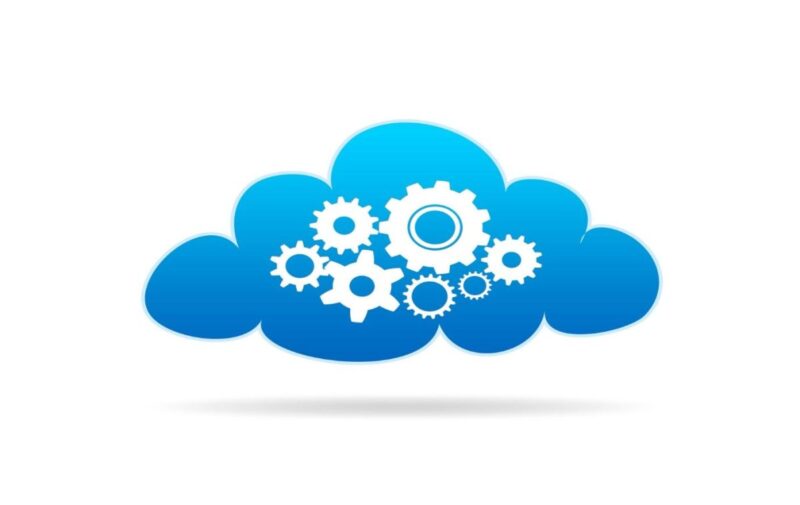Introduction
The cloud is an incredibly powerful tool for increasing business agility and operational efficiency. Between 2010 and 2020, the Cloud Services Industry has grown by a staggering 380 percent, standing at $370 billion by the end of 2020. As per a survey conducted by Forbes, 83% of the enterprise workload will be stored on the cloud by the end of 2020. But cloud security still remains an area of concern, especially with cloud automation services taking off. Estimates suggest that in 2022 cloud automation services will be a $12.38B market and cloud management tools will grow to $21 billion by 2022. As per AllCloud’s Cloud Infrastructure Report, 28% of respondents consider security as one of the most important criteria in choosing their cloud service provider.
A recent Salesforce report found that 94% of businesses experienced a significant improvement in security after migrating to the cloud. However, cloud security is a complex and evolving field that also comes with new challenges that IT must address in order to maintain a secure environment. IT Support Kentucky offers an extensive range of custom services for enterprise cloud solutions.
The Top 7 Advanced Cloud Security Challenges
Wider Attack Surface
The attack surface of a cloud environment is the number of entry points for potential threats. It is important to understand that each layer in your cloud environment increases your exposure to a breach. The increased attack surface is especially problematic with hybrid clouds and cloud-native applications because they combine the advantages of both areas but also introduce new vulnerabilities due to their complexity. For example, since many hybrid environments involve connecting existing on-premises infrastructure with third-party services in the data center or through an internet connection (for example), this creates more potential entry points for intruders. We’ve already seen malware, zero-day, account takeover, and a host of other types of cyber-attacks mushrooming in the public cloud as well. Similarly, while cloud-native applications may operate at a higher velocity than traditional software systems do—and thus provide better responsiveness—they often lack traditional security measures such as firewalls or antivirus software that would protect against attacks.
Poor Visibility and Tracking
There are three main types of cloud services: Infrastructure as a Service (IaaS), Platform as a Service (PaaS), and Software as a Service (SaaS). In the IaaS, PaaS, and SaaS cloud models, the control of the infrastructure layer is centralized to the cloud management platform provided by the cloud provider. These services are typically made available through a multi-tenant environment that consists of a single shared infrastructure that is shared by all customers. It is in the nature of the cloud that there is an infinite level of abstraction between the applications that are running and the actual hardware, networks, and storage.
In the IaaS model, cloud providers control complete management of the operational details of the cloud infrastructure, including servers, storage and networking devices. In platform-as-a-service (PaaS) and Software as a Service (SaaS) models, customers have very limited visibility into their environments.
Dynamic Provisioning and Changing Workloads
In cloud computing environments, workloads are provisioned and decommissioned rapidly, making it impossible for traditional security tools to keep pace with dynamic provisioning and workload shifts.
DevOps, DevSecOps, and Automation
The security controls for a particular DevOps deployment must be identified and documented prior to the deployment. By doing this, it helps ensure that only those security-related changes will be implemented after the DevOps workload has been deployed into production, thereby reducing the risk of undermining the organization’s security posture as well as time to market.
Control Over Access Management
Implementing cloud user roles correctly is essential to protecting data and preventing breaches. One common example is granting database delete or write permissions to untrained users or users who have no business need to delete or add database assets. At the application level, improperly configured keys and privileges expose sessions to security risks.
Highly Complex Environments
To address the needs of enterprises with multi-cloud and hybrid cloud strategies, security tools must integrate across public cloud providers, private cloud providers, and on-premise deployments. This must also cover branch office edge protection for geographically distributed organizations.
Cloud Compliance and Governance
Cloud compliance refers to meeting regulatory requirements that apply to your organization. It’s important for organizations because it ensures that you are following global industry standards, which can help when trying to sell products or services into new markets, especially those with strict requirements like healthcare or finance. Most leading cloud providers keep well ahead of well-known compliance programs such as PCI 3.2, NIST 800-53, HIPAA, and GDPR. However, at the end of the day, it falls to the customer to ensure compliance with these regulations. This can be tricky to achieve given the poor visibility of cloud environments as well as their fast-changing dynamics. By making continuous use of Cloud Services monitoring tools that track configurations, alert when misconfigurations occur, and manage compliance processes efficiently, companies can streamline their security operations.
Post courtesy: Systems Solutions, IT Support Provider in Clarksville & Evansville.










